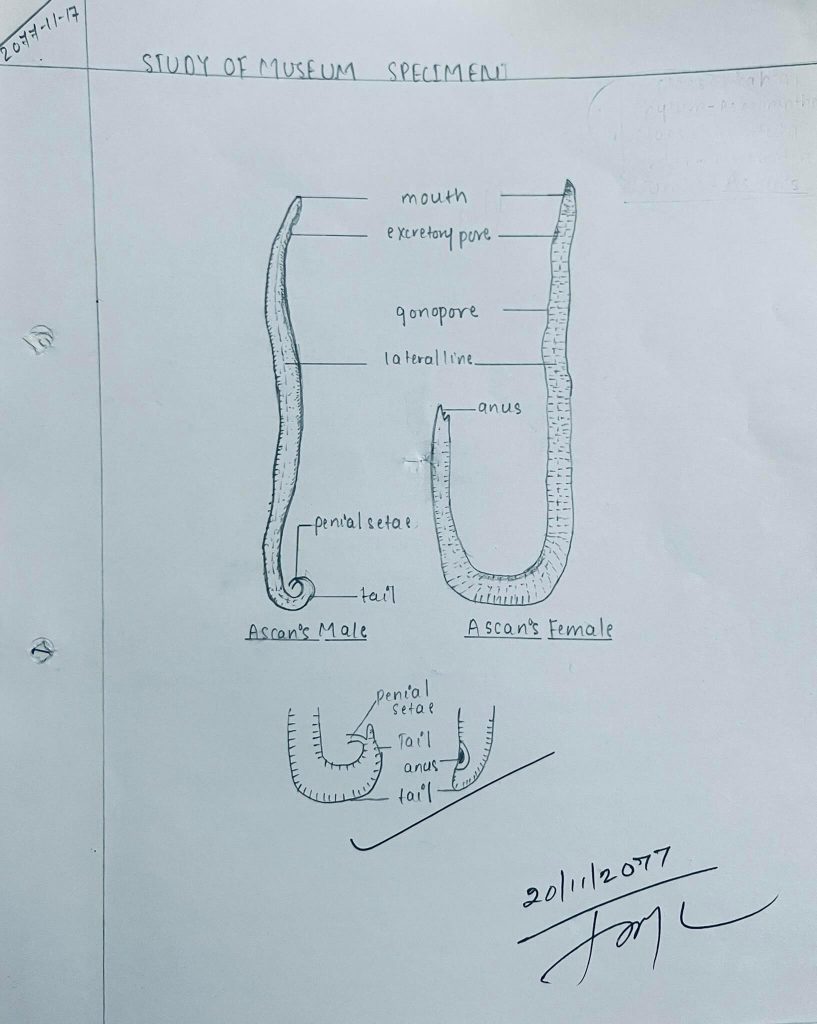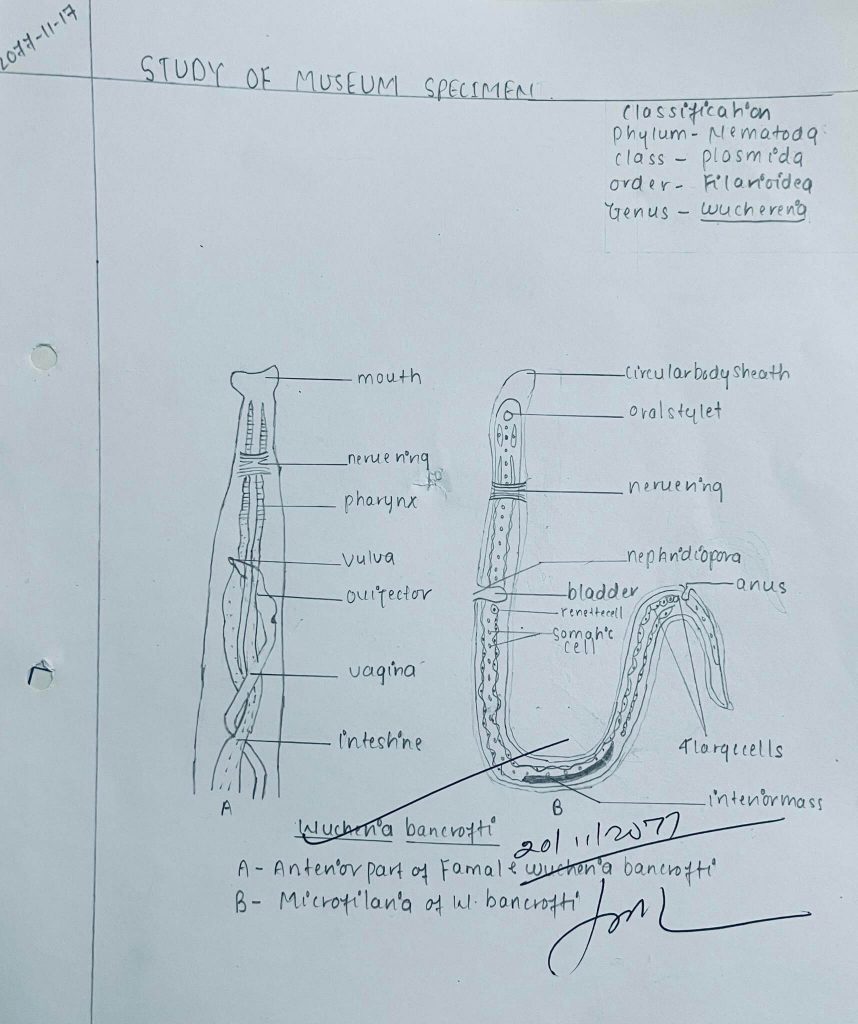Comments of Ascaris
Distribution:
Ascaris is cosmopolitan in distribution. It’s especially found in India, China, Philippines, Korea and the Pacific Islands.
Habit and Habitat:
Ascaris Lumbricoides is a common endoparasite in the small intestine of man in all parts of the world.
General character:
1. Ascaris lumbricoides is commonly known as roundworm.
2. Body is elongated, cylindrical pointed at both ends.
3. Mouth provides with a median dorsal and a pair of symmetrical submedian ventral lips.
4.Male is about 15 to 31 cm in length with the posterior end curved ventrally.
5. Female is large, reaching a length of 20 to 35 cm with the posterior and straight and blunt.
6. Female genital aperture lies about one-third of the length of the body from the anterior.
Economic Important of Ascaris:
It causes Ascariasis disease in human.
Diagram of Ascaris

male and female ascaris
Comments of Wuchereria Bancrofti
Distribution:
Wuchereria bancrofti is widely distributed in tropical and sub-tropical countries in the world.
Habit and Habitat:
Wuchereria bancrofti is found as a parasite in the lymph glands or ducts of man.
General character:
1.Wuchereria is the most important human parasite in the lymph glands.
2.Adult women are creamy white in color, filiform and cylindrical in shape with both ends tapering and terminating bluntly.
3.Mouth is unarmed and devoid of buccal capsule.
4.Male is about 40 mm in length with the caudal and curved like the tendril of vine
5. Microfilaria is long cylindrical, provided with a striated cuticle.
6. Culex mosquito serves as an intermediate but which sucks the blood along with microfilariae from the infected host.
7.Wuchereria bancrofti causes a serious disease known as filariasis or wuchereriasis.
Economic Importance:
It causes lymphatic filariasis in human.
Diagram of Wuchereria Bancrofti

